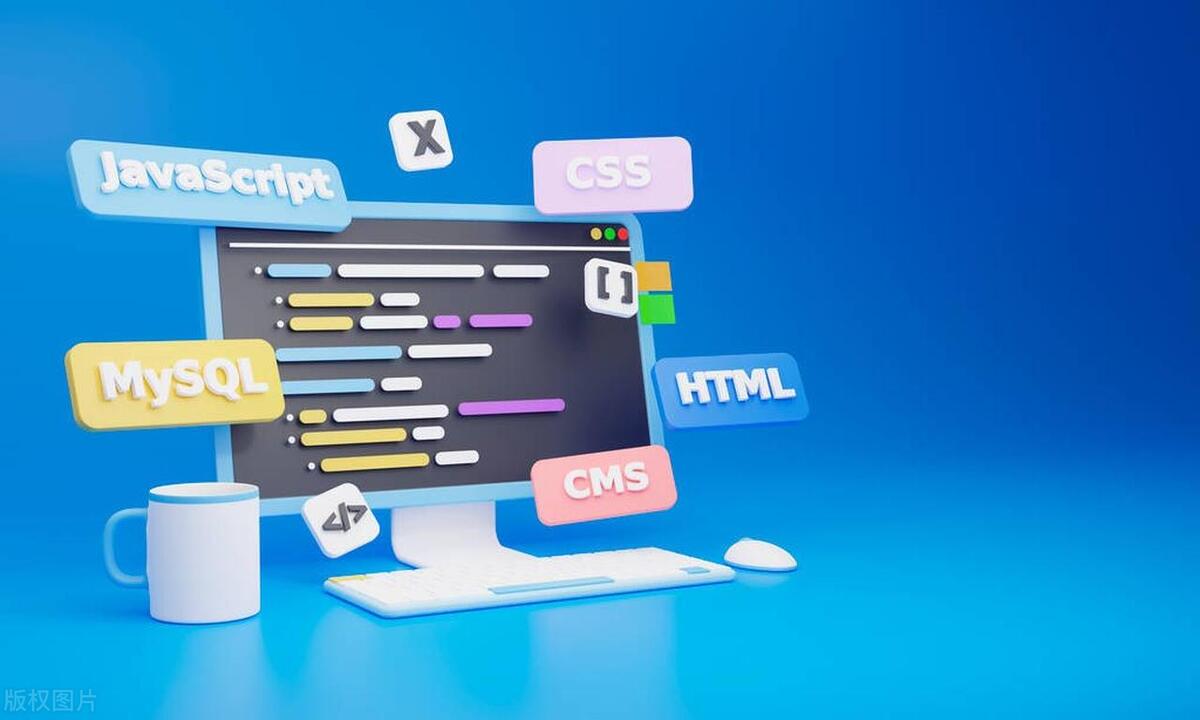Understanding Client-Side Rendering
Jul 16, 2025 am 01:31 AMClient rendering (CSR) means that web page content is dynamically generated by the browser by executing JavaScript, rather than the server directly returning the complete HTML. Its core process includes: the browser first downloads the basic HTML file, then requests and executes JS code, and finally JS gets data from the API to fill the page. The advantages of CSR are fast page switching, clear front and back end separation, and suitable for high interactive applications. But the disadvantages are that the first screen is slow loading, difficult SEO optimization, and rely on JS. Suitable for background systems, user dashboards, SPA applications; not suitable for SEO-sensitive, mass marketing or poor network environment scenarios.

When a web page is loading, have you ever encountered a situation where the page content is blank for a few seconds and then suddenly "bounces" out? This is likely to be client-side rendering (CSR for short) that works behind it. It makes web pages look smoother and faster to interact, but it also brings some issues to note.

What is client rendering?
Simply put, client rendering refers to the main content and logic of a web page being generated by the browser running JavaScript on the user device , rather than the server directly returning the complete HTML page. This method makes page switching faster and user experience better because every time you click on a link, you don't need to reload the entire page.
For example, when you use some modern front-end frameworks (such as React and Vue), you will find that the page switching is smooth, the URL has changed but only some of the content has been updated. This is a typical manifestation of CSR.

Client rendering workflow
The core of CSR is that after the browser downloads the HTML file, it requests and executes JavaScript code, and the page content is dynamically generated from these codes. This process can be roughly divided into several steps:
- Download a basic HTML file in the browser
- One or more JS files are referenced in HTML
- Download and execute JS code in the browser
- JS fetches data from the API based on the current URL and populates the data into the page structure
Although this process is flexible, it also comes with a cost: the first load may be slower, because you have to wait for JS to complete before you can see the full content.

Advantages of CSR: Why do you like to use it?
- Fast page switching experience : Once the initial resource is loaded, subsequent page switching only requires partial updates, which is very fast.
- The separation of front and back ends is clearer : the front end is responsible for rendering, and the back end only provides data interfaces for easy team collaboration and maintenance.
- Suitable for highly interactive applications : such as social platforms and online editing tools, such as scenarios that require frequent responses to user operations.
This is also the reason why many modern web applications (such as Gmail, Facebook, and Twitter) use client rendering.
Disadvantages of CSR: Don't ignore these issues
Although client rendering has its advantages, there are several obvious shortcomings:
- The first screen loads slowly : Users may see blank pages or load animations, affecting their first impression.
- SEO optimization is difficult : Search engine crawlers may not catch dynamically generated content unless they are dealt with in particular.
- Depend on JavaScript : If the user's network is poor or JS is disabled, the page may not be displayed normally.
For example, if your website survives on advertising or search traffic, and the homepage is rendered by CSR, then search engines may not see your core content at all, resulting in a decline in ranking.
When should I use CSR?
To choose client rendering or to look at the project type:
-
? Suitable for use of CSR :
- Internal system and background management interface
- Personal dashboard after user login
- Single-page application (SPA) that requires a lot of user interaction
-
?Not suitable for CSR :
- Marketing page for the public
- Content-based websites with high SEO requirements
- Target user groups with poor network environment
If your project belongs to the latter, you can consider server-side rendering (SSR) or static generation (SSG), which can take into account both loading speed and SEO effects.
Basically that's it. Client rendering is not omnipotent or evil. The key is to understand its characteristics and use it in a suitable scenario.
The above is the detailed content of Understanding Client-Side Rendering. For more information, please follow other related articles on the PHP Chinese website!

Hot AI Tools

Undress AI Tool
Undress images for free

Undresser.AI Undress
AI-powered app for creating realistic nude photos

AI Clothes Remover
Online AI tool for removing clothes from photos.

Clothoff.io
AI clothes remover

Video Face Swap
Swap faces in any video effortlessly with our completely free AI face swap tool!

Hot Article

Hot Tools

Notepad++7.3.1
Easy-to-use and free code editor

SublimeText3 Chinese version
Chinese version, very easy to use

Zend Studio 13.0.1
Powerful PHP integrated development environment

Dreamweaver CS6
Visual web development tools

SublimeText3 Mac version
God-level code editing software (SublimeText3)
 How does React handle focus management and accessibility?
Jul 08, 2025 am 02:34 AM
How does React handle focus management and accessibility?
Jul 08, 2025 am 02:34 AM
React itself does not directly manage focus or accessibility, but provides tools to effectively deal with these issues. 1. Use Refs to programmatically manage focus, such as setting element focus through useRef; 2. Use ARIA attributes to improve accessibility, such as defining the structure and state of tab components; 3. Pay attention to keyboard navigation to ensure that the focus logic in components such as modal boxes is clear; 4. Try to use native HTML elements to reduce the workload and error risk of custom implementation; 5. React assists accessibility by controlling the DOM and adding ARIA attributes, but the correct use still depends on developers.
 Server-Side Rendering with Next.js Explained
Jul 23, 2025 am 01:39 AM
Server-Side Rendering with Next.js Explained
Jul 23, 2025 am 01:39 AM
Server-siderendering(SSR)inNext.jsgeneratesHTMLontheserverforeachrequest,improvingperformanceandSEO.1.SSRisidealfordynamiccontentthatchangesfrequently,suchasuserdashboards.2.ItusesgetServerSidePropstofetchdataperrequestandpassittothecomponent.3.UseSS
 A Deep Dive into WebAssembly (WASM) for Front-End Developers
Jul 27, 2025 am 12:32 AM
A Deep Dive into WebAssembly (WASM) for Front-End Developers
Jul 27, 2025 am 12:32 AM
WebAssembly(WASM)isagame-changerforfront-enddevelopersseekinghigh-performancewebapplications.1.WASMisabinaryinstructionformatthatrunsatnear-nativespeed,enablinglanguageslikeRust,C ,andGotoexecuteinthebrowser.2.ItcomplementsJavaScriptratherthanreplac
 How to manage component state using immutable updates in React?
Jul 10, 2025 pm 12:57 PM
How to manage component state using immutable updates in React?
Jul 10, 2025 pm 12:57 PM
Immutable updates are crucial in React because it ensures that state changes can be detected correctly, triggering component re-rendering and avoiding side effects. Directly modifying state, such as push or assignment, will cause React to be unable to detect changes. The correct way to do this is to create new objects instead of old objects, such as updating an array or object using the expand operator. For nested structures, you need to copy layer by layer and modify only the target part, such as using multiple expansion operators to deal with deep attributes. Common operations include updating array elements with maps, deleting elements with filters, adding elements with slices or expansion. Tool libraries such as Immer can simplify the process, allowing "seemingly" to modify the original state but generate new copies, but increase project complexity. Key tips include each
 Security Headers for Frontend Applications
Jul 18, 2025 am 03:30 AM
Security Headers for Frontend Applications
Jul 18, 2025 am 03:30 AM
Front-end applications should set security headers to improve security, including: 1. Configure basic security headers such as CSP to prevent XSS, X-Content-Type-Options to prevent MIME guessing, X-Frame-Options to prevent click hijacking, X-XSS-Protection to disable old filters, HSTS to force HTTPS; 2. CSP settings should avoid using unsafe-inline and unsafe-eval, use nonce or hash and enable reporting mode testing; 3. HTTPS-related headers include HSTS automatic upgrade request and Referrer-Policy to control Referer; 4. Other recommended headers such as Permis
 What are custom data attributes (data-*)?
Jul 10, 2025 pm 01:27 PM
What are custom data attributes (data-*)?
Jul 10, 2025 pm 01:27 PM
The data-* attribute is used in HTML to store additional data, and its advantages include that the data is closely related to elements and comply with HTML5 standards. 1. When using it, name it starts with data-, such as data-product-id; 2. It can be accessed through JavaScript's getAttribute or dataset; 3. Best practices include avoiding sensitive information, reasonable naming, paying attention to performance and not replacing state management.
 Applying CSS Styles to Scalable Vector Graphics (SVG)
Jul 10, 2025 am 11:47 AM
Applying CSS Styles to Scalable Vector Graphics (SVG)
Jul 10, 2025 am 11:47 AM
To style SVGs using CSS, you first need to embed SVGs inline into HTML for fine control. 1. Inline SVG allows its internal elements such as or to be directly selected through CSS and to apply styles, while external SVG only supports global styles such as width and height or filters. 2. Use regular CSS syntax such as .class:hover to achieve interactive effects, but use fill instead of color to control the color, and use stroke and stroke-width to control the outline. 3. Use class names to organize styles to avoid duplication and pay attention to naming conflicts and scope management. 4. The SVG style may be inherited from the page, and can be reset through svg*{fill:none;stroke:none;} to avoid
 How to add a favicon to a website?
Jul 09, 2025 am 02:21 AM
How to add a favicon to a website?
Jul 09, 2025 am 02:21 AM
Adding website Favicon requires preparing icon files, placing the correct path and quoting them. 1. Prepare multi-size .ico or .png icons, which can be generated by online tools; 2. Put favicon.ico in the website root directory; 3. If you need to customize the path or support more devices, you need to add a link tag reference in the HTMLhead; 4. Clear the cache or use the tool to check whether it is effective.






